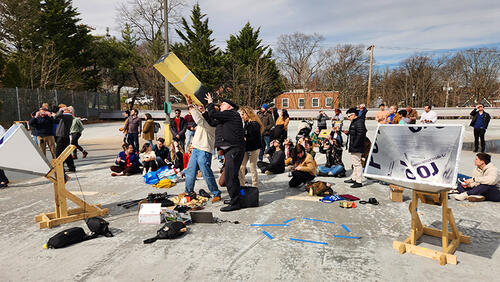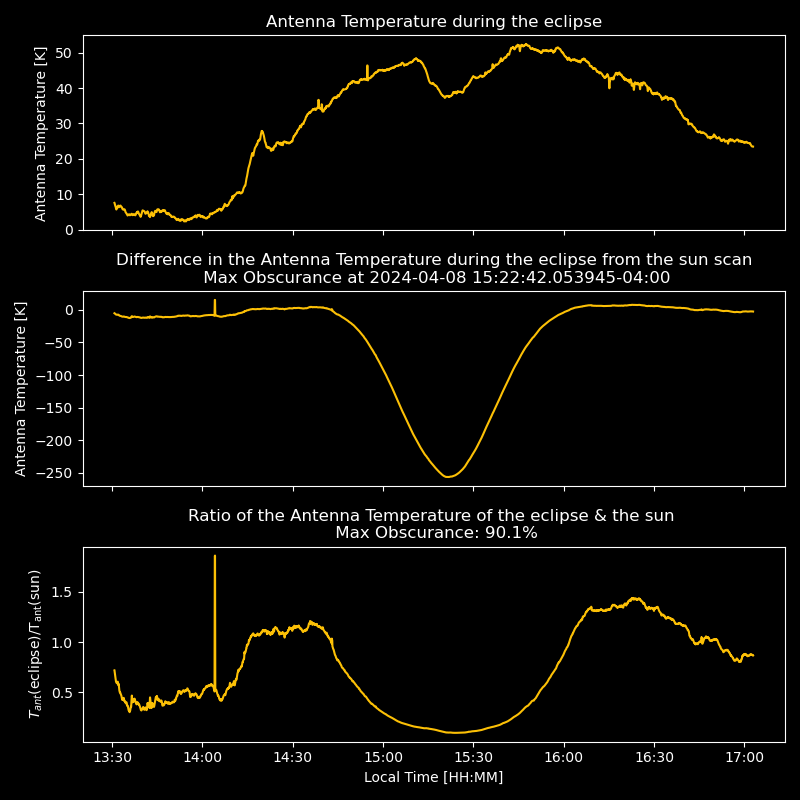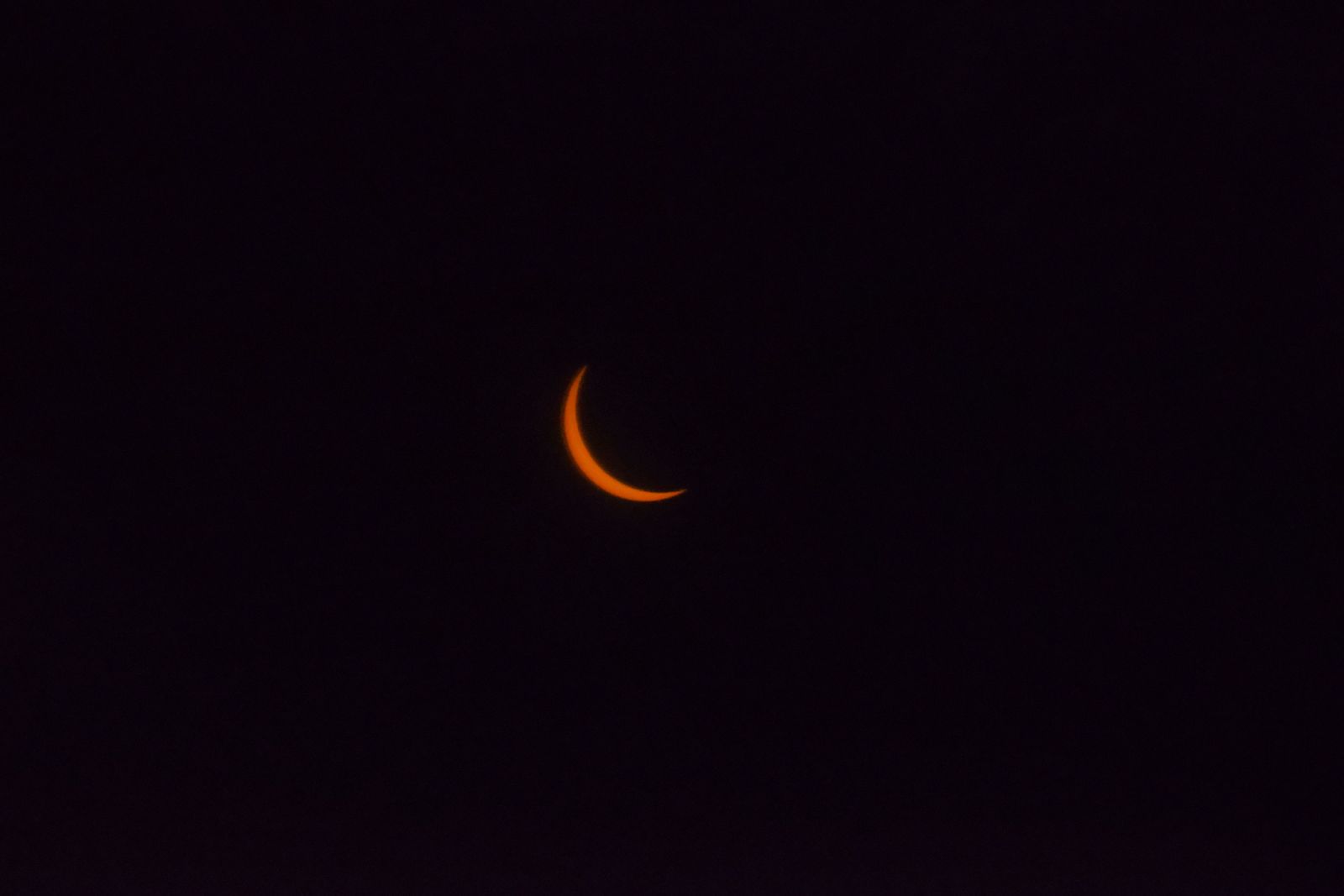
Members of Yale Wright Laboratory (Wright Lab) and the surrounding community gathered on April 8 outside of Wright Lab on the top of the Pierson Sage Garage to view the solar eclipse.
Wright Lab postdoctoral associate Pranav Sanghavi set up two 21cm radio telescopes to take data of the eclipse. The telescopes are usually used for outreach led by the Newburgh Lab.
Sanghavi explained, “these 21cm radio telescopes are made from inexpensive hardware store supplies and are run using open source software. In addition to the sun, these telescopes can also be used to measure the relative velocity of our solar system as well as the evidence of multiple arms as well as dark matter within our Galaxy.”
Sanghavi also constructed and brought a large pinhole camera for the community to use. The pinhole camera can be used to look at the shadow of the eclipse without needing special eyewear. Sanghavi periodically gave explanations about the equipment and the eclipse as new observers arrived.
Sanghavi also took scans of the sun just before the eclipse started, as well as the day before, to calibrate the telescopes and compare with the data taken during the eclipse. Sanghavi said, “The aim is to see the sun’s broadband radio emission dip from the ‘usual’ when the moon occults the sun.”
According to the data, which can be seen in the below plot made by Sanghavi, about 90% of the sun was covered during the peak of the eclipse over Wright Lab.

Photos from the event can be seen on our Flickr album here.
For more information about the science of the solar eclipse, please see this video narrated by Meg Urry, Israel Munson Professor of Physics.

Image of the maximum obscuration taken by Sanghavi with a camera, solar filter, and super telephoto lens.

